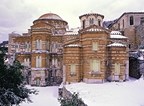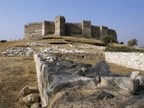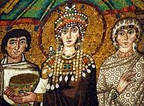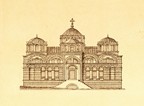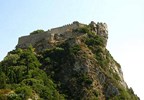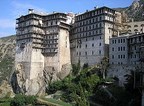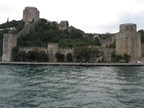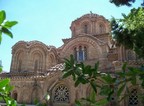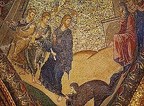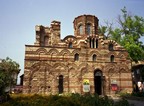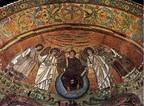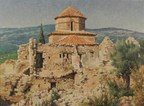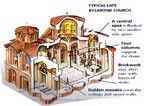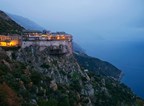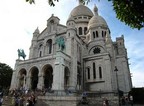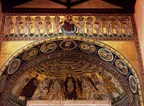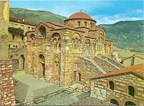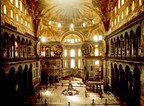Byzantine Empire or the eastern Roman Empire was created to adjust administration control on the kingdom. At the same time there were some remains of the Arabic civilization in all aspects of like. Slowly very slowly the Roman culture and civilization started getting influenced by the remains of another great civilization. To go through the Byzantine church styles it is found that the architecture of the early churches were purely leveraged on Roman architecture and as time progressed they changed to bring in more Arabic or Islamic architecture styles in it. There are many places today where the churches are found to follow this architecture and even in some of the deeper places of Europe it is found to exist.
The roman straight line architecture was the first on which earlier Byzantine churches established and then the mastery or Arabs in mathematics could be seen in the further designs. The circular or square designs were replaced by hexagonal courtyards, structural domes on piers, balloon shaped dome tops were all came in to application. The square door frames or entrances were also somewhat curved in the introduction of new style. These new architecture style of the Empire was so famous that had wide applicability that it influenced European and Asian architecture for nearly a millennium. It is very rare to find to organizational or non religious buildings of that time and since churches are the most well maintained structures this discussion can be confined to Byzantine church styles.
The churches in discussion were different from the gothic churches in design and formation concept. The western churches had the basic design of the basilica where a narrow passage leads to the pier or the main area of the church. In the newer concept the design changed from longitudinal orientation to central orientation. The main area of the church shifted from one end to the centre of the church and in most of these churches the central area was occupied by tomb or burial ground of a saint or some highly religious person of the locality. The other concept of covering the roof in sky formation through a dome was also accompanied with this idea and the Islamic influence in the complete thinking cannot be denied. Even today the concept is similar for tombs and not wrong to say Byzantine church styles are still alive today though in somewhat oblique concept. In Constantinople there are even churches build in combination of the two concepts together.
Turkey, Asia minor, Mesopotamia were the places where this style of churches spread very rapidly but it also penetrated Europe as in Russia we can still see some of the most beautiful and famous churches build on this concept. The Russian provinces of extreme winter modified this design to make it more conical or slippery to naturally release the accumulated snow at different parts of it, from consideration of the huge weight gathered by the snow. Even in Italy and Greece there are churches that were built with inspiration and direct references from this style of architecture. As complex geometry was introduced in church design there were more options of shape available to design the church; coming out of the compulsion of rectangular or linear design of the western churches there were oval shapes, cruciform and even some which were concentric with specific chambers and layers. There were also some new religious beliefs in those designs different from beliefs but founded on the scriptures. In Byzantine church styles there were new chamber sections introduced and message of salvation was etched through every aspect of the churches.
In some of the interior parts of Russia the influence was diluted and the local architecture and belief also was combined to build the churches. It resulted in some of the most beautiful monuments of Russia and the typical designs of fresco, stepped construction and paint decorations were done on the walls in their outside to result in effects that are still appreciated. The outside stories were not done by masters but their pivotal issues were taken from scriptures and could be a weak parallel of Sistine chapel. Apart from the unique paintings there were multiple domes in these churches which had smaller peripheral domes surrounding the central large dome. On either side of Mediterranean the two countries were also heavily influenced by the Byzantine church styles and some of them are still attractive to the eye in their intact architecture and beauty of design.
The churches that were built on the influence were also accompanied by the idols of similar ideas. Some of the Greek families have been providing the desired idols required for the churches. The idols of saints and sages in the concerned churches were more decorative and had their individual shapes and designs which have been traditionally maintained through time for these churches. There are not many people who have mastery of the art and so the idols are a bit expensive and take time to develop. The minaret was and is one of the important sections of the churches and still today the Byzantine churches are identified at a glance through the smaller dome minaret and it is this special feature which is found is some of the more uncommon corners of earth.
At the rise of Byzantine church styles Europe was going through lot of change. New communities were emerging and old were changing guards. Civilizations were falling and rising. In such a situation it is common for any belief or idea to penetrate deep if pursued with power and devotion. The same happened with this design and it could cover entire region in its influence, the intensity of those influences were directly dependent on the distance the place was from the epicenter of activity. So as one moves westward the influence weakens and it could hardly reach Atlantic. It may be surprising that some of the churches in US and Canada have the designs of Byzantine church styles but then some of the people may consider beauty of the design and engineering brilliance a valid reason to apply them in modern times.
